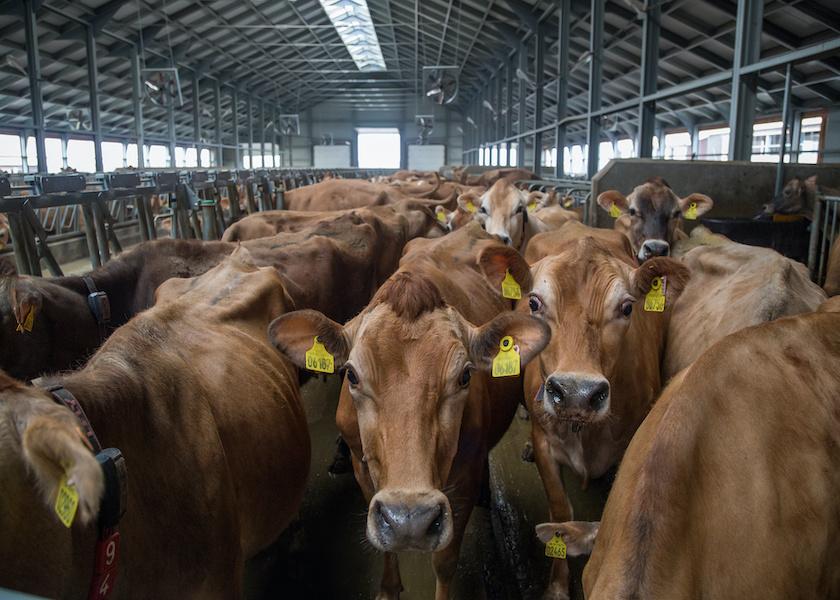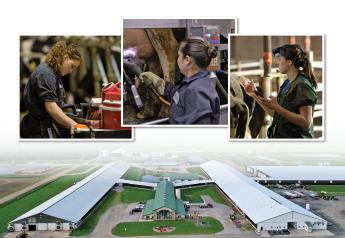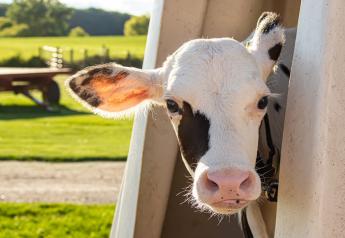Accelerating Efficiency in the Milk Supply Chain

How can we become more efficient? This is a question that not only dairy producers ask, but also many dairy companies evaluate. Recently, at the 2024 Dairy Farmers of America (DFA) Annual Meeting in Kansas City, Mo., Corey Gillins, chief milk marketing officer for DFA, spoke about accelerating efficiency in the raw milk supply chain.
Through a member survey conducted over a year ago, DFA anticipates fewer member farms in the years to come. Tough financial situations unfolding on farms accelerated the pace of farms exiting, and Gillins noted that more than 500 of their member farms exited in 2023. DFA is now planning to have around 5,100 farms by 2030.
Even with the decline in farm numbers this past year, DFA did not see much of a drop in milk production. Gillins pointed out that they anticipate their member’s milk production to increase at a moderate pace going forward.
“There are several factors that will impact that growth and some of these we've been dealing with for a while,” he said.
Gillins pointed out that high interest rates and the low heifer inventory will challenge growth, at least for the short term.
“While they will have some impact on us, we do still anticipate some growth,” he said.
Supply and Demand
A unique story is playing out, especially as the Southwest area, like New Mexico, is decreasing in milk production. Gillins questions where Southeast milk will come from, as previously it would come from areas like New Mexico. This means that milk likely will be transported further distances in the future.
“We're going to be moving more milk further distances to meet the market demands,” he says.
“And we see some of these dynamics, even within areas if you look at the Mideast area and Michigan, where we're going to continue to see strong growth in milk supply. And yet, if you just go south into Ohio, we anticipate seeing some level of decreased milk supply.”
According to Gillins, more than 1.5 million lbs. of milk per day is being moved out of Michigan and it is unlikely that number will decrease in the future.
Moving Milk Further Distances
Over the next couple of years, Gillins shares that we are going to see an increased demand for more than 50 million lbs. of milk per day.
“Where's that all going to come from?” he asks, sharing that some of it is going to come from new growth. “And some of it is going to come from milk moving from current processing facilities to these new plants.”
Gillins alluded that DFA’s future milk supply is looking tight, where they will likely be short on milk at certain times which means milk will have to be transported further distances to fill the needs.
“So how do we drive efficiency in the raw milk supply chain when we're dealing with those dynamics?” he asks, sharing that a more coordinated marketing and logistics plan will be executed locally.
A milk solids optimization plan is in the works at DFA and Gillins says they are looking at balancing efficiency and strategic transportation. While DFA has managed and tracked balancing costs for many years, they now are looking at that number collectively.
Keeping efficiency in mind, DFA is asking questions, like:
- How do we better utilize our existing assets?
- Where do we have existing capacity that may not be utilized?
- What are the product mixes in these plants and are we getting the highest value of products out of these plants that will improve our balance?
When it comes to transportation, DFA spent more than $880 million getting milk from the farm to the plant in 2023. He shares that DFA’s president and CEO, Dennis Rodenbaugh, encouraged 1% improvements. With transportation, the question is how can costs be better managed?
Key Piece
Gillins shares that technology is going to be a key piece and their partnership with Ever.Ag on software solutions will be beneficial. Currently, 43% of their member’s milk is being picked up utilizing a mobile application. Gillins says while there is a cost savings not to deal with a paper trail, the real benefit comes from the data.
“We will have this from every leg of every route that will help us drive efficiency in our business,” he says, sharing that part of efficiency is to make sure trucks are either picking up milk, hauling milk to the plant, or unloading.
“If it’s sitting and waiting, it's being inefficient,” he says.
As DFA accelerates its raw milk supply efficiencies, they can identify the bottlenecks that can help the cooperative to become better financially, but also more sustainable, sharing how one plant saw a 40% reduction in CO2 emissions.
“This all leads up to how do we become a best-in-class fluid logistics organization,” Gillins says, sharing that standardization is going to be key to their success. “We have to standardize our processes, from milk dispatch to delivery. We have to standardize our data and how we use it. We have to standardize our practices. As we look at the accelerated pace of change in our industry and we look at the technology that's becoming available to us, we have the opportunity to transform our business and bring more financial value back to our farmer-owners through our raw milk supply chain opportunity.”







